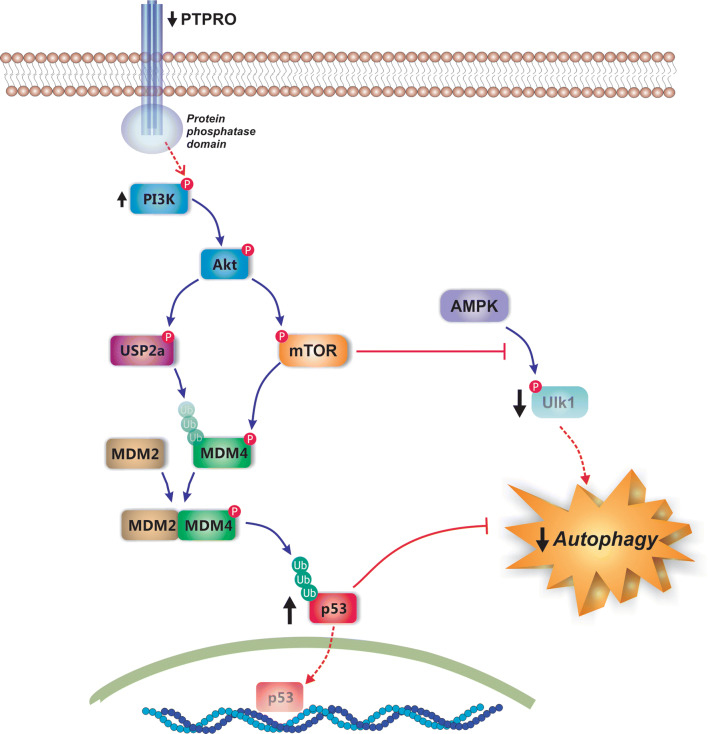Fig. 8.
Molecular mechanisms of autophagy inhibition in NAFLD. Downregulation of the protein tyrosine phosphatase receptor type O (PTPRO) in NAFLD leads to impairment of signaling pathways involved in autophagy activation. Since PTPRO is involved in inactivation of the phosphoinositide 3-kinase (PI3K)/Akt signaling pathway, its downregulation leads to activation of this pathway and the further Akt-dependent stabilization of MDM4 via both mammalian target of rapamycin (mTOR)-mediated phosphorylation and ubiquitin-specific cysteine protease 2a (USP2a)-mediated deubiquitination. After stabilization, MDM4 forms the MDM4/MDM2 complex, a regulator of the p53 cytoplasmic levels via p53 poly-ubiquitination; this leads to cytoplasmic accumulation of p53, a well-recognized inhibitor of autophagy function. Akt-mediated mTOR activation also inhibits autophagy by blocking the activation of the pro-autophagic kinase unc-51 like autophagy activating kinase 1 (Ulk1) by AMP-activated protein kinase (AMPK)

